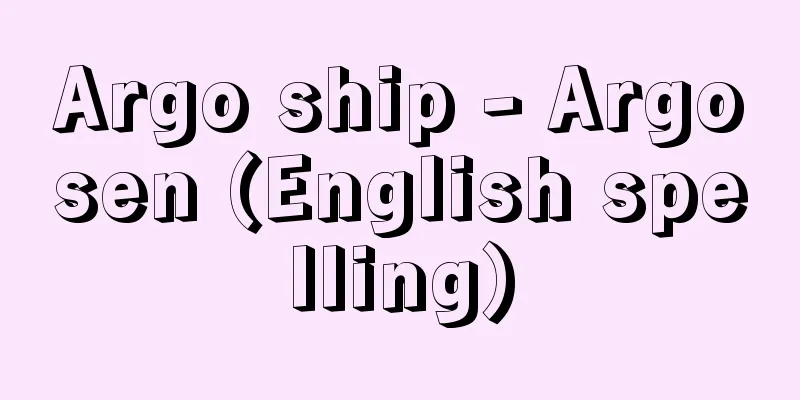Argo ship - Argosen (English spelling)

|
In Greek mythology, this is the ship on which heroes embarked on a journey to obtain the Golden Fleece. Built by the shipwrights of Argos under the guidance of the goddess Athena, the bow of the ship, made from sacred oak, was able to speak human language. The crew of this ship were called the "Argonauts," and their many adventures were compiled into a single story sphere. Initially, Jason, who was ordered by King Pelias of Thessaly to retrieve the Golden Fleece from Colchis, east of the Black Sea, gathered adventurous warriors from all over Greece. In addition to those who excelled in their particular arts, such as the Dioscuri, who were skilled in horse riding and boxing, the fleet-footed Euphemus, the clairvoyant Lynceus, the flying Zetes and Calais, the musician and prophet Orpheus, and the skilled helmsman Tiphis, famous heroes and women also joined the group, and a total of over 50 people set out from Iolcus in Thessaly. Along the way, they encounter the desertion of Hercules, battles with barbarians at every stop, and the slaying of the Harpies at King Phineus's house. They narrowly escape the "Striking Rocks" and finally arrive at Colchis. There, King Aeetes gives them a difficult task (plow the fields with fire-breathing oxen and sow the fields with dragon's fangs), but Jason, with the help of Princess Medea, completes it. After stealing the Golden Fleece, they have many adventures on their return journey, traveling up the Danube River and overland to the North Sea, or reaching Oceanus at the western edge and then sailing back to the Mediterranean Sea. They travelled through the islands of Circe, the Sirens (where the charms of Orpheus' song overcame the magic of the Sirens), ashore in Africa, and finally defeated the bronze giant Talos on the island of Crete before finally returning to Iolcus. It is believed that the background of this story sphere may be the experience of maritime activities of the Greeks (or the indigenous peoples), and the most detailed story is given in the epic poem "Argonautica" by Apollonius of Rhodes. [Tetsuro Nakatsuka] [References] | |Source: Shogakukan Encyclopedia Nipponica About Encyclopedia Nipponica Information | Legend |
|
ギリシア神話で、金の羊毛皮獲得の旅に出た英雄たちが乗り組んだ船。アテネ女神の指導で船大工アルゴスが建造し、神聖な樫(かし)でつくられたその船首は人語を発しえた。この船の乗組員は「アルゴナウタイ」とよばれ、彼らの数々の冒険は一つの物語圏にまとめられた。初め、黒海の東コルキスの地より、金の羊毛皮を奪ってくることをテッサリアのペリアス王より命じられたイアソンは、ギリシア中から冒険好きの勇士を集めた。騎馬と拳闘(けんとう)にたけたディオスクロイ、駿足(しゅんそく)のエウフェモス、千里眼のリンケウス、飛行できるゼテスとカライス、楽人で預言者のオルフェウス、舵(かじ)取りの名手ティフィスなどの一芸に秀でた者のほかに、名高い英雄女傑も加わり、総勢50余名でテッサリアのイオルコスを出発した。 途中、ヘラクレスの脱落や、行く先々での夷狄(いてき)との戦い、フィネウス王の所でのハルピュイアイ退治などがあり、「撃ち合い岩」の間を危機一髪で漕(こ)ぎ抜けてやがてコルキスに到着する。そこではアイエテス王から難題(火を吐く牛に犂(すき)を引かせて畑を耕し、竜の牙(きば)を蒔(ま)くこと)を課せられるが、王女メデイアの援助を受けたイアソンがこれを果たした。金の羊毛皮を奪ったのちの帰路にも多くの冒険があり、彼らはダニューブ川を遡行(そこう)してのち陸行して北海に至り、あるいは西の果オケアノスに出たのち回航して地中海に戻った。つまりキルケの島、セイレネスの島(ここでオルフェウスの歌の魅惑がセイレネスの魔力に勝った)、アフリカ漂着、そしてクレタ島での青銅の巨人タロス退治などを経て、彼らはイオルコスに帰り着いた。 なおこの物語圏の背景には、ギリシア人(あるいは先住民)の海洋活動の経験があろうかと考えられている。ロドスのアポロニオスの叙事詩『アルゴナウティカ』がこれを扱ってもっとも詳しい。 [中務哲郎] [参照項目] | |出典 小学館 日本大百科全書(ニッポニカ)日本大百科全書(ニッポニカ)について 情報 | 凡例 |
>>: Argos (country name) - Argos
Recommend
Ganami - Ganami
?-? A monk from the Muromachi period. Jishu sect....
intellect
…The knowledge of an intellectual usually refers ...
Ashtabula
A city on the shores of Lake Erie in northeastern ...
Nerine flexuosa (English spelling)
…[Tora Saburo Kawabata]. … *Some of the terminolo...
Reversible cell
A battery in which both the positive and negative ...
Jews - Yudayajin (English spelling)
They belong to the Semitic language group, but ar...
orthogonal coordinates
…Normally, to display a parallel coordinate syste...
Parents and children - Yorioya Yoriko
A protector-protected relationship that is like a ...
Guðmundsson, S. - GumundssonS
...However, in terms of visual arts, not many not...
Rustaveli, Shota
A great Georgian poet of the 12th century. He is b...
Primitive Christianity
This usually refers to the 100 years of Christiani...
Historical materialism - historischer Materialismus German
This refers to the materialistic view of history ...
Pierrot - Pierrot (English spelling) French
A type of Western clown. Its prototype is the slo...
Seneca
...the Iroquois were Indians who lived in the for...
Cotton Field Affairs - Menpoyoumu
A study of cotton cultivation. Written by Okura N...









